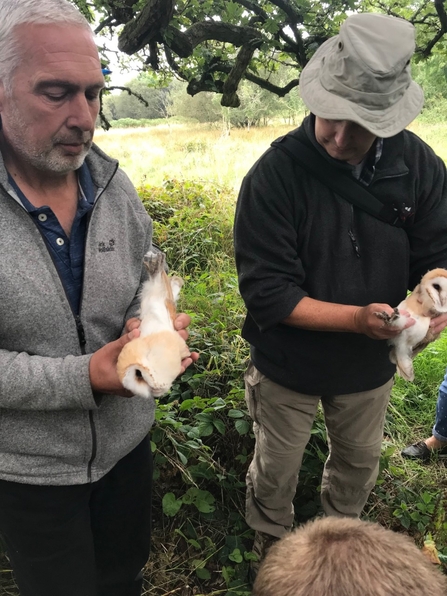Why ring birds
Ringing birds generates information on their movements, productivity and survival, helping us to understand why populations are changing. This information is important for bird conservation and identifying the many pressures faced by birds.
I first became involved in bird ringing in the 1970s as a teenager and have always had a very keen interest in all things avian. I ‘fledged’ as a bird ringer in 1979, and have subsequently gone on to become a ringing trainer. Although I have been on ringing expeditions in Britain and Ireland, Europe and further afield, most of my ringing over the last 40 years has been at Copeland Bird Observatory. CBO has a long association with Ulster Wildlife and we often work in collaboration so I was delighted when, in 2014, I was approached to assist with their Barn Owl project by ringing young barn owls thought to be being raised in a nest box. You’re kidding, right? This was the stuff of dreams!
Barn owls and ringing
For some years, Ulster Wildlife had been putting up barn owl nest boxes in association with dedicated landowners at key locations in an effort to help the small and declining population of barn owls in Northern Ireland. The use of barn owl nest boxes to supplement natural nest sites has been tried and tested and, if properly constructed and located, the owls will take readily to them. It can however often take several years before owls will actually use a nest box to rear their chicks, so much of the donkey work had been done before this stage.
Barn owls are protected under Schedule 1 of the Wildlife (NI) Order (1985) so a license is required from DAERA to permit any kind of disturbance at or near the nest site. Although there might have been an argument not to allow disturbance due to their rarity, the species is well studied throughout the world and ringing of the chicks, if properly managed, can be done with minimal disturbance and negligible risk. So, after careful consideration, DAERA granted the necessary license to allow ringing to take place.

